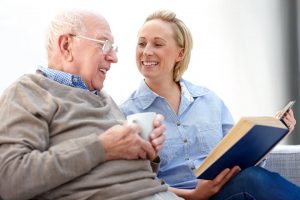Skin Care for the Elderly: 7 Useful Tips to Take Care of Your Skin in Your 60s and 70s
Your 60s is a period of reduced stress as you relinquish control over demanding commitments such as young children and work. Additionally, this is the stage when you have more flexibility to indulge in yourself and put your wants first. With less stress and more flexibility, this decade gives you more opportunities to keep your skin healthy and looking great.
Visible signs of aging do not have to mar an otherwise glorious chapter of your life. Understanding the current changes in your skin is vital to building the best anti-aging skincare routine for seniors. Slow down the hands of time with products that boost collagen, reduce wrinkles, and moisturize your skin.
Here are some skincare tips to help you achieve healthier skin and feel more confident as you blow out more birthday candles.
Understand Your Skin
While everyone experiences skin aging, women’s skin ages faster after menopause. The skin’s balance is disrupted when the production of certain hormones drops, which explains why signs of aging are more visible in women in their 60s.
Healthy aging-related skin changes such as thinning, dryness, roughness, sagging, and the appearance of age spots and deeper wrinkles and lines are unavoidable. Many of these characteristics are caused by the loss of firmness and elasticity in your skin.
It’s only natural for your skin to go through changes over time. However, external variables such as pollution, stress, and sun exposure might accelerate or aggravate this process. Your skin may also be more susceptible to common skin conditions affecting the elderly such as eczema, skin infections, and severely dry and itchy skin.
Understand your mature skin’s characteristics so you can use mild, effective, and natural products that address your specific needs.
Use Natural and Organic Skincare Products
Many conventional skincare products contain hormone-disrupting chemicals like parabens, phthalates, GMOs, sodium lauryl sulfate, and synthetic colorants and fragrances. These carcinogens are known to have devastating effects on the immunological, reproductive, and endocrine systems.
Natural, organic, or vegan skincare products are less prone to trigger allergic reactions, inflammation, or irritations since they do not contain harsh chemicals. These natural skincare products rich in botanical oils, vitamins, and antioxidants often provide superior benefits.
Protect Your Skin from the Sun
One of the most common causes of wrinkled, spotted skin is sun exposure. While sun damage may not manifest fully until later in life, it is never too late to improve your skin’s health by limiting your exposure to the sun.
Apply a broad-spectrum, water-resistant sunscreen with an SPF of 30 or above whenever your step outdoors. Seek shade, particularly between 10 AM and 4 PM when UV light is strongest. Wear a wide-brimmed hat and lightweight apparel that protects your skin from the sun.
Don’t Neglect Cleansing
Cleanse your face and neck at the start and end of each day as part of your beauty regimen. This will help maintain the health of your skin and stimulate skin renewal.
Because mature skin is more sensitive, use a mild, organic facial cleanser that is gentle on the skin. Consider oil cleansing instead of using traditional facial cleansers. Cleansing oils are a form of multi-purpose facial wash that purifies and hydrates your skin at the same time.
Don’t Take Too Long in the Shower or Tub
Taking a bath or shower can help soothe dry, itchy skin, but remember to keep it short. While a hot bath may be a wonderful way to unwind, you risk drying out your skin if you spend too long in the tub.
Wash with a mild, fragrance-free, moisturizing bar soap or body wash to help reduce dryness. Avoid using hot water as it can dehydrate your skin and contribute to its dryness—use warm water instead. Finally, apply a good moisturizer formulated for dry skin while your skin is still damp.
Exfoliate Gently
When you reach your 60s, it is important to gently exfoliate your skin to boost its ability to rejuvenate. Exfoliating also aids in the removal of dead skin cells, resulting in a more radiant complexion.
As previously stated, your skin is thinner and more fragile, so use a mild, organic face and body scrub and gently massage it over your skin in circular motions. Don’t apply too much force as this may easily lead to more fine lines and worsen the situation of sagging skin. Additionally, limit your exfoliating routine to every 10 to 14 days.
Hydrate More
Stay properly hydrated both inside and outside. Consuming sufficient water throughout the day may be a difficult habit to form for anyone, but keep in mind how critical it is to stay hydrated and how it can impact your skin.
Skin tends to become dull and dehydrated when you reach your 60s. If you want to keep your skin bright and supple, drink more water and apply a deeply moisturizing cream every morning and evening. Doing so will help reduce the appearance of pronounced wrinkles and restore your skin’s freshness, radiance, and suppleness.
Age Gracefully in Your 60s and Beyond
Consider this stage of your life as an opportunity to look and feel great about yourself. Embrace your wrinkles and be proud of the accomplishments you’ve made throughout the decades. Adopt an effective skincare routine, a healthy lifestyle, and a happy outlook to make aging gracefully a breeze.






